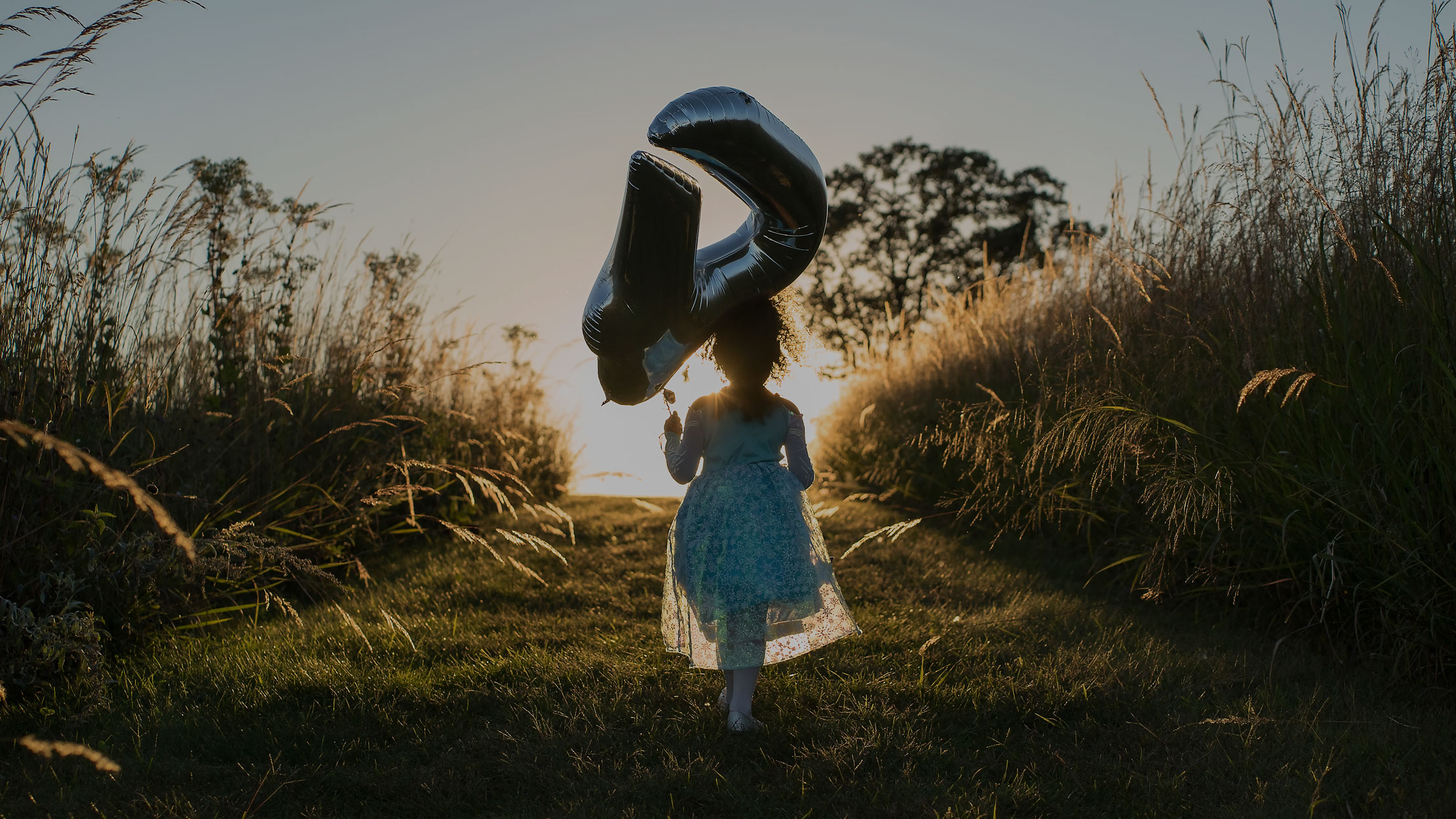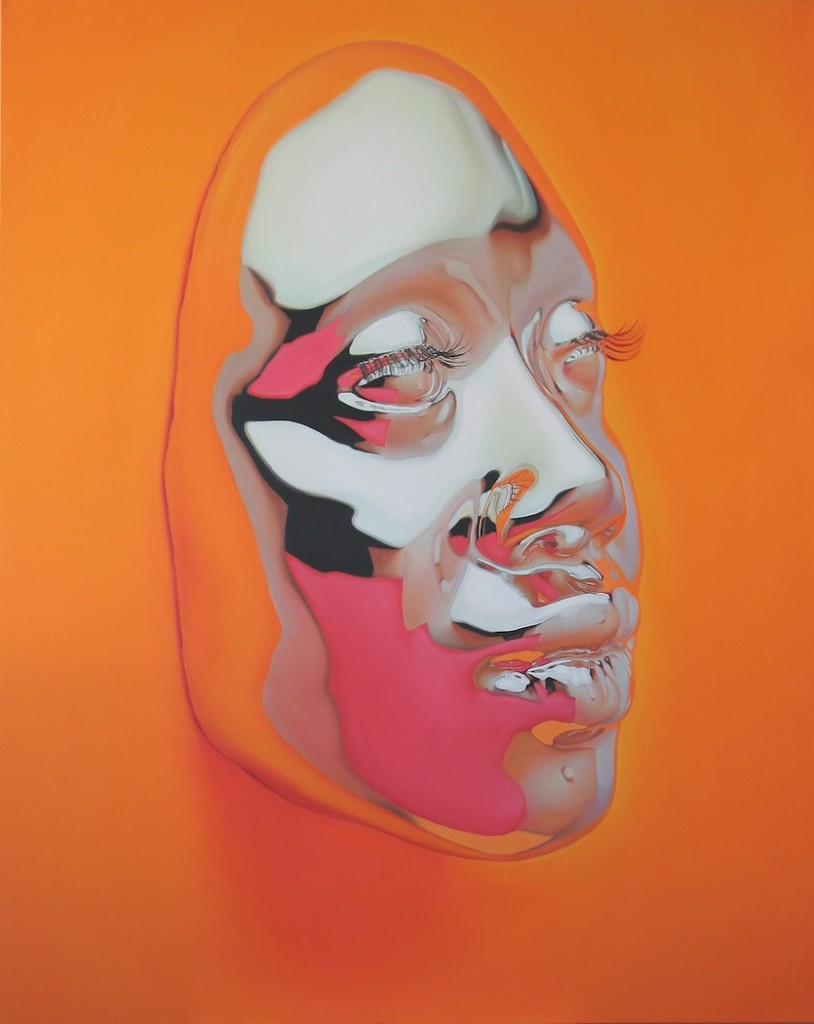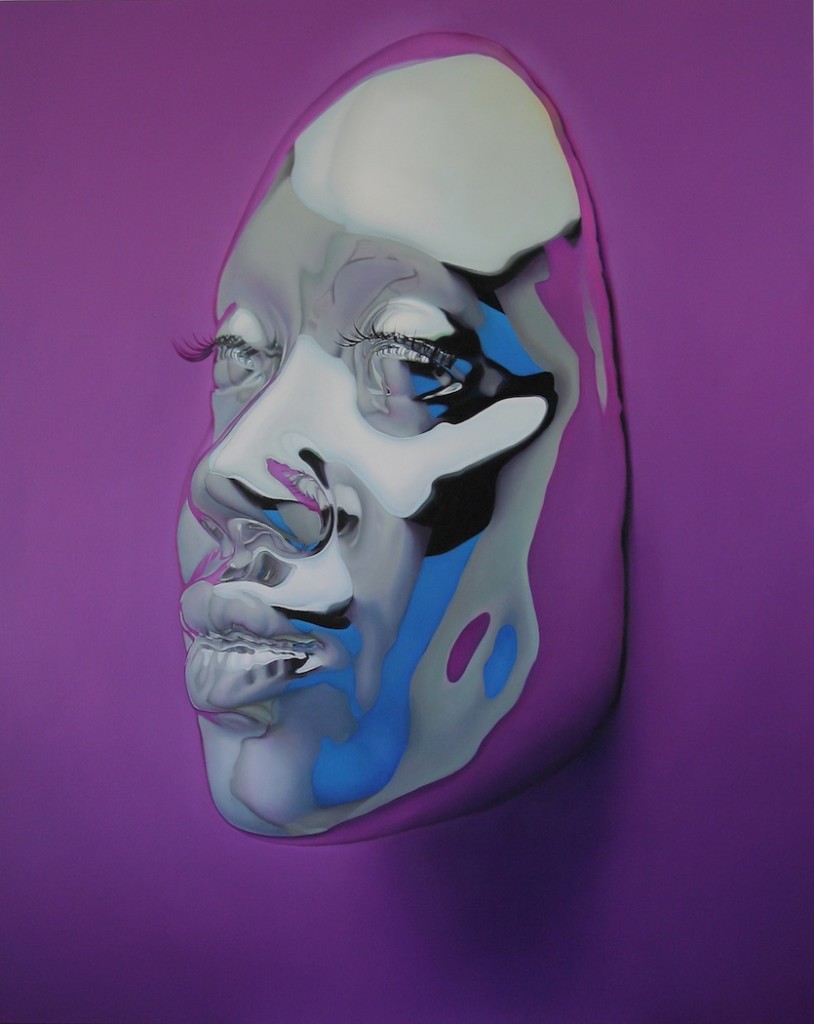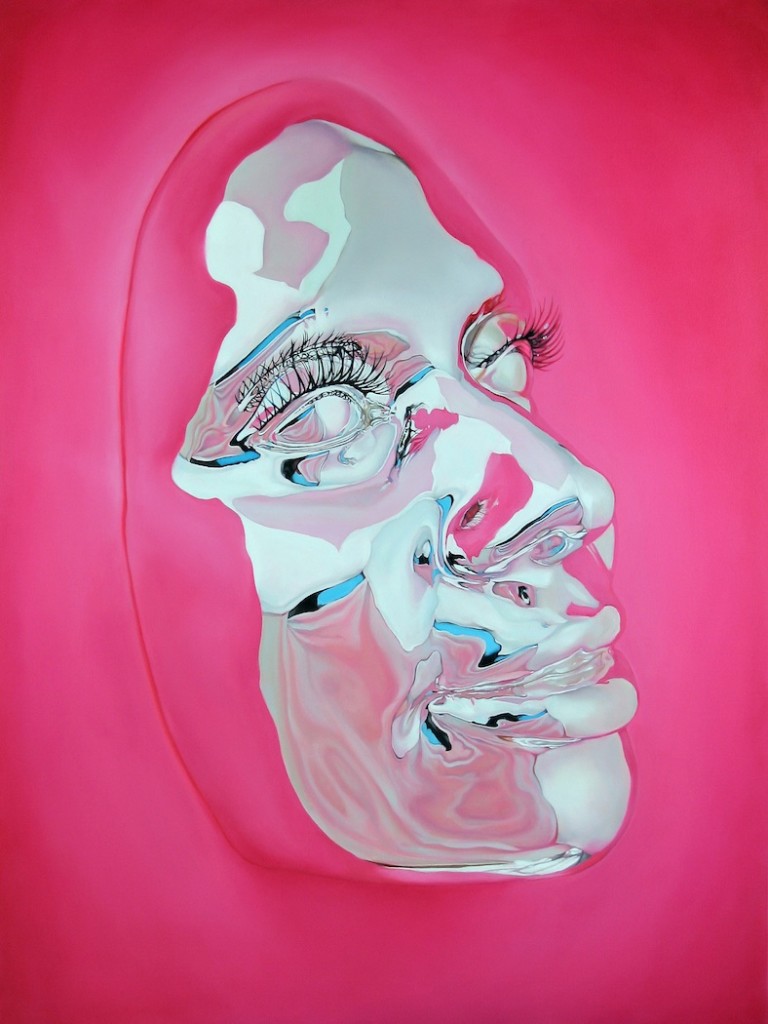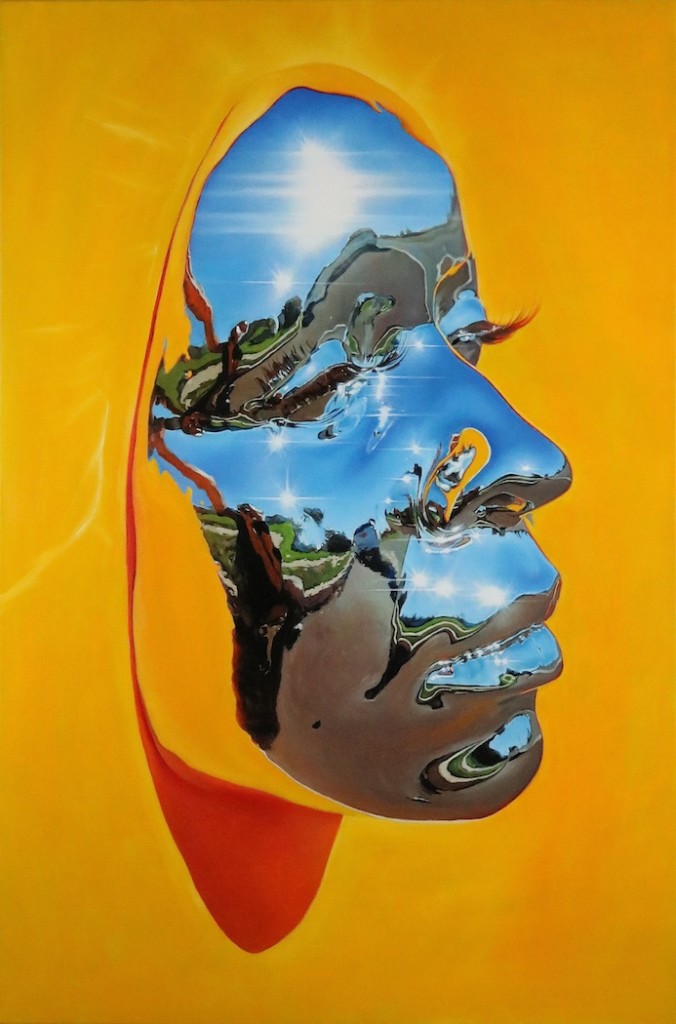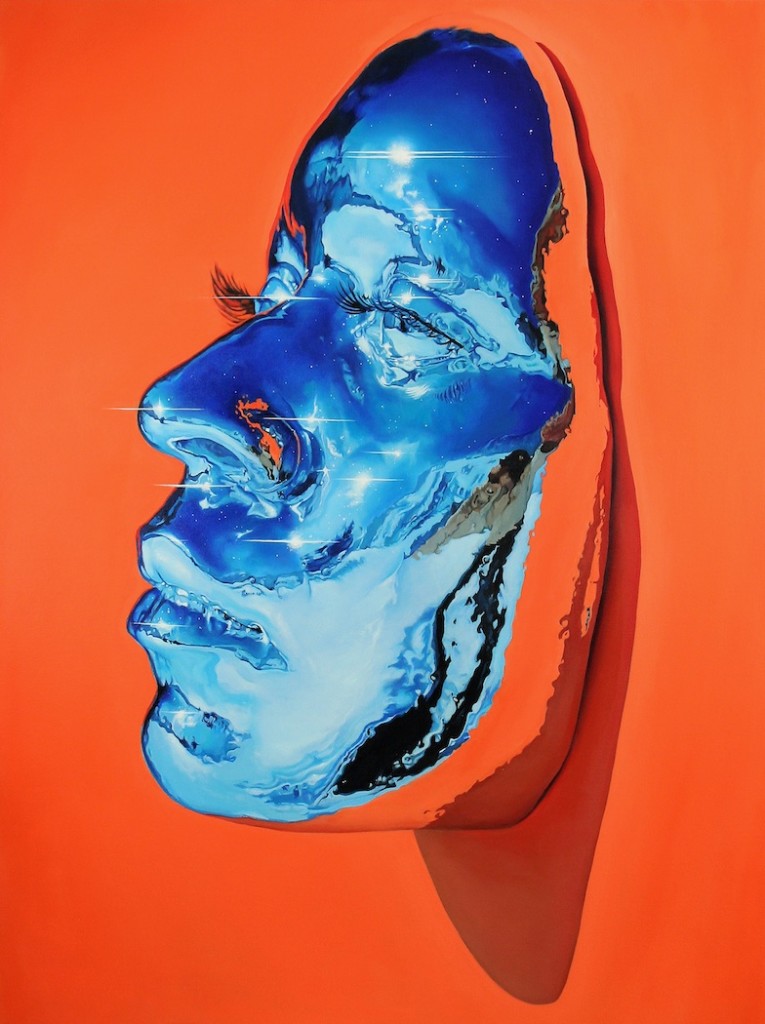Kip Omolade
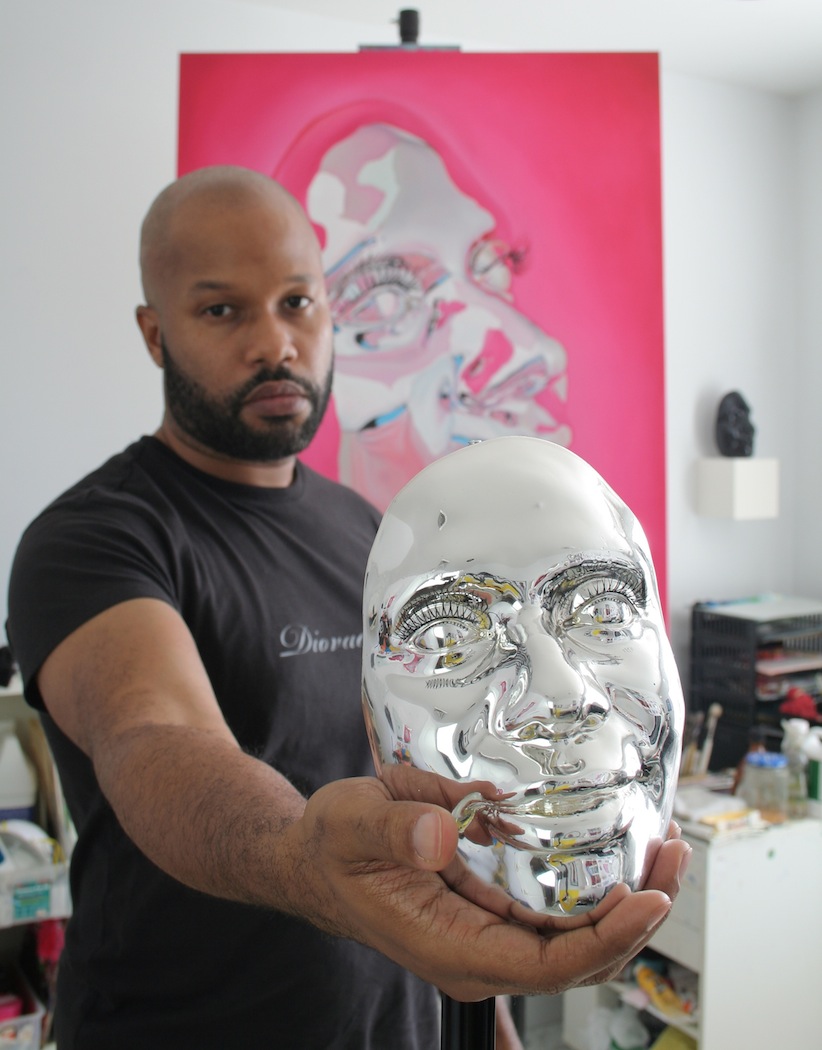
Who are you and what do you do?
I am Kip Omolade. I was born in Harlem, NY and later moved to Brooklyn where I began my art career. I started as a graffiti artist while interning at Marvel Comics and The Center for African Art. I continued at The Art Students League of New York and earned a BFA at the School of Visual Arts.
I create art.
What is your favorite medium?
Oil paint, but I am always interested in using any materials that will help to effectively express my ideas.
Where do you draw your inspiration from?
Luxury cars, women’s beauty magazines, dreams, nature–almost anything.
What is your creative process?
My Diovadiova Chrome paintings start with a mold of the model’s face. This is the most communal part of the process as I have assistance in applying the mold and plaster strips. I then make a cast plaster sculpture from the mold. After that I sculpt the eyes and parts of the nose based on several photographs of the model. I make another resin cast that is later covered in chrome. Also, adding the artificial eyelashes helps convey a feeling of glamour and exaggerated emotion.
After positioning the sculpture against a color-saturated background, I photograph dozens of references for the oil painting. The painting process is the longest part of the procedure, as I slowly add thin layers of oil until I achieve the desired details and color luminosity. In the beginning of the whole process, there is a sense of unpredictability, as the mold captures every unexpected nuance and expression of the model. However, when I paint, the work becomes more deliberate as I control every mark on the canvas. The whole process takes about five months.
Is there a specific theme/message/emotion you aim to evoke?
My Diovadiova Chrome portraits historically connect to ancient, realistic African sculptures such as Benin ivory masks and Ife bronze heads. The oil paintings are psychological studies that investigate immortality, the universal masks we all wear and contemporary notions of beauty and luxury.
What motivates you to continue to create?
Besides self-expression, my motivation is to include more voices in the universal discussion about what it means to be human.
When you encounter creative blocks, what do you do to overcome them?
I never encounter creative blocks. I have the opposite problem. Because so many ideas come to me, my challenge is to schedule my time to create as much as possible.
If you are constantly looking at everything, thinking and are in tune with your emotions, it’s impossible to encounter creative blocks.
What are your thoughts on the future of art?
Digital photography, Photoshop and 3D printing have expanded the tools artists have in their repertoire. Simultaneously, online social networking allows artists to reach a worldwide audience, research other forms of art and get immediate feedback with their work.
In the future, there will be even more technological advances for creativity and networking platforms, but there will be an even greater need for original concepts. “Why do you do what you do?” will be the question real artists will have to answer.
What is something you have had to learn on your own that you would like to pass on to the next Creative?
The aesthetics of my Diovadiova Chrome project link to my childhood love of superheroes like Silver Surfer. Graffiti influenced the use of bright colors. The relationship to African masks represents my heritage and finally, the use of oil paint and portraiture connects to my formal training.
I used my experiences to create a motif that continually challenges my skills and technique but still leaves room for conceptual exploration. My suggestion would be to develop a unique vision that encompasses who you are as a person and share it with the rest of the world. The more specific your work is to your life, ironically, makes it more universal.
